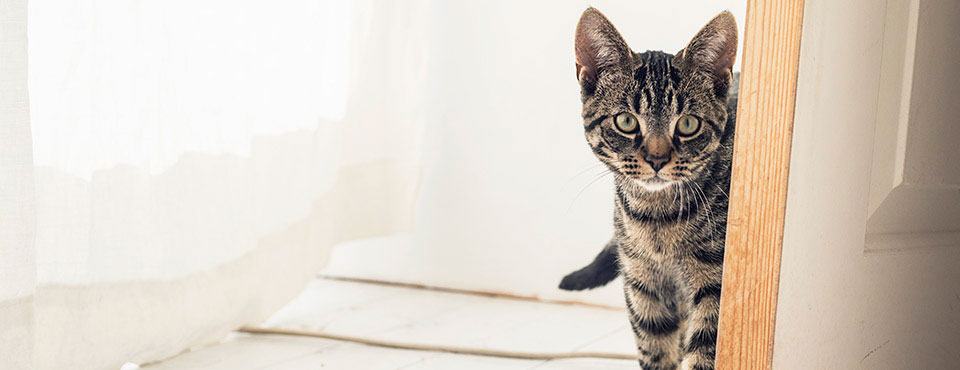
Cat Proofing Made Easy
CARE & NUTRITION
22 Apr, 2019
READ 3 minutes
Cats are curious creatures. Their instinctual and playful nature may be fine outside, but indoors they have the potential to get into lots of trouble. When it comes to cat-proofing your home, the golden rule is: think like a cat. Knowing where they like to play and hide can keep them out of harm’s way. Here’s a quick guide to help you keep your cat safe.

BATHROOM
Many items found in your bathroom are toxic to cats. Medication, cleaning products, and toiletries should always be out of reach. Toilet seats should always be down. Cats love climbing, and the last thing you need is your kitten falling in the toilet. If your cat learns how to open doors (which many do), you may want to consider putting a child lock on any doors they should not open.
LAUNDRY
Always check the washer and dryer before turning them on. Cats love to sleep in warm places, like inside or on top of these machines. As with bathroom products, always keep laundry detergents, bleach, and other chemicals out of reach from your cat.
WINDOWS
Blinds, curtains and dangling cords are potential hazards. Be sure to secure dangling cords to help your cat avoid trouble. If your cat stays indoors, you may want to ensure that all windows and screens are properly secured so your cat cannot escape.

TRASH CANS & CONTAINERS
Having a sturdy lid on the trash is important, as is keeping small wastebaskets out of your cat’s reach. A curious cat can knock over a garbage can filled with sharp items like chicken bones and tin cans, all of which can cause great harm. A secure lid will prevent your cat from accessing anything dangerous.
FURNITURE
Cats love squeezing into tight, enclosed spaces and they can easily get stuck in furniture, sofa beds, and drawers. Beware of reclining chairs as cats often like to nest in warm, dark places. Whenever opening or closing a reclining chair, check to make sure your cat is not underneath or inside of it.
ELECTRICAL CORDS AND OUTLETS
Cats are easily distracted by things like yarn and strings, so electrical cables pose a considerable risk. Not only can your cat get tangled up in the cables, but electrical wires can also shock your cat if they tug or pull at one. Licking an electrical socket could result in an electric shock. Think about investing in plug socket covers to help keep your cat away from this potential danger.
Being a cat owner isn’t always easy. These cute fur balls can undoubtedly be a handful, especially when left home alone. Luckily, cat-proofing your home isn’t very difficult. By following these simple steps, you can help keep your cat safe.
RELATED POSTS
-

Ticks are small, but the harm that they can spread to you, your dog, cat, and family is mighty. Ticks are blood-sucking parasites that often carry disease-causing bacteria and parasites. As a result, they transmit an array of different infections, sometimes simultaneously, into the bloodstream when they consume a meal. The transmission of tick-borne diseases…
-

Could your dog’s skin problems, possibly including incessant scratching and licking, be something more than allergies? If your pup is losing fur, scratching like crazy, perhaps showing reddened areas of skin, and you can’t find any fleas, then it could be one of several skin diseases called “Mange.” Mange occurs when the skin is infested…
-

If you’ve ever traveled or gone camping and have come down with a nasty case of diarrhea, there is a chance you contracted a common intestinal infection known as Giardia. This same infection is also common in your pets. But before you reach for any over-the-counter remedies, there are some important facts you should know…
-

It’s easy to deal with ticks on a dog when you know where they flourish. Learn how to spot and remove them to keep your dog protected from harm.






